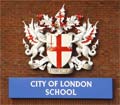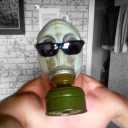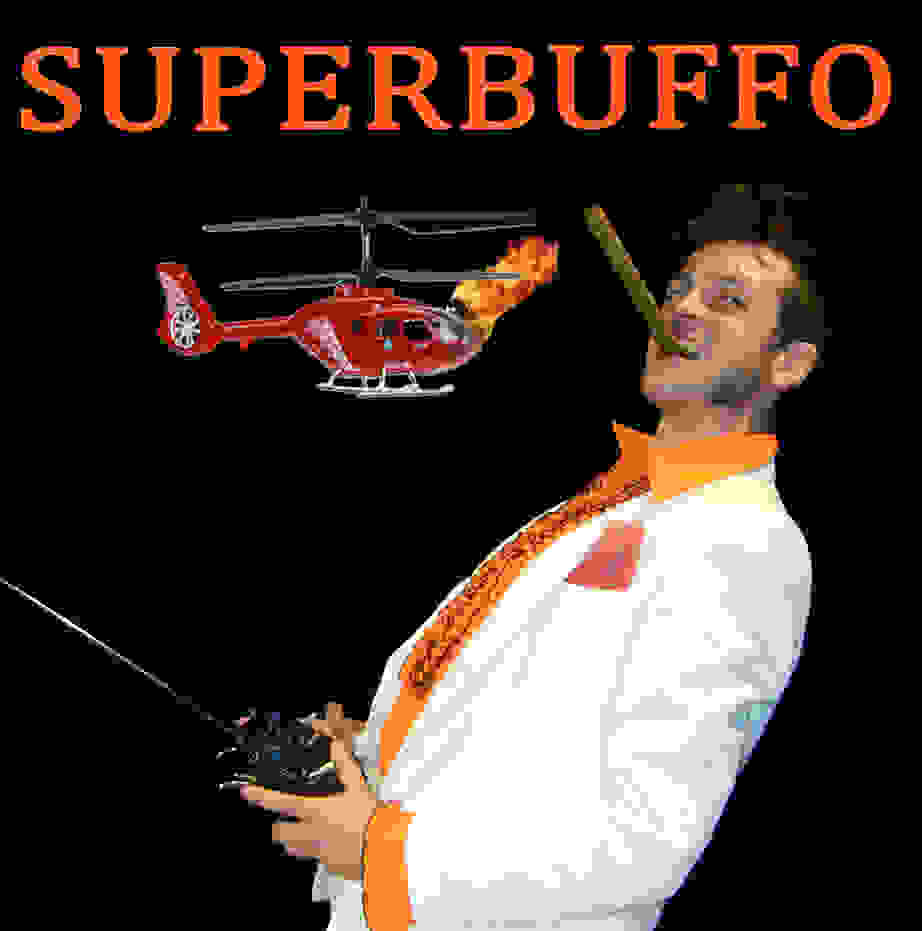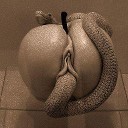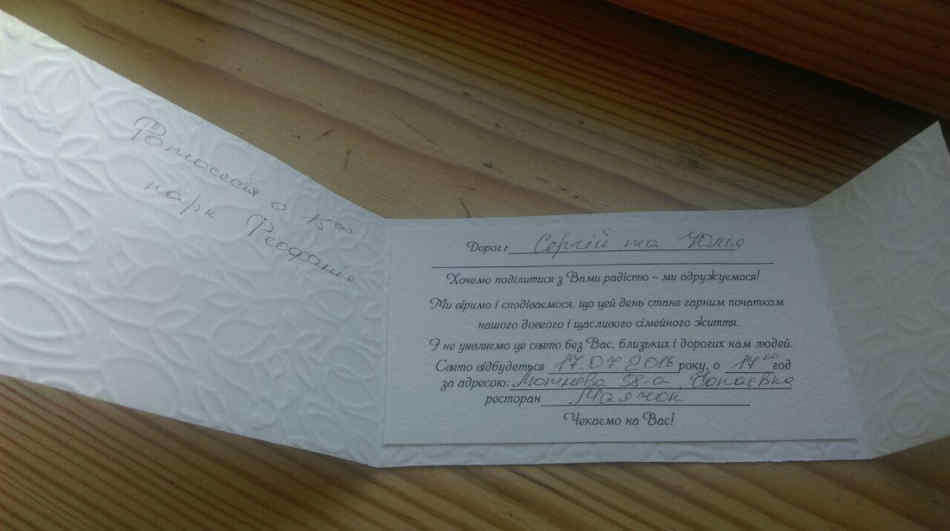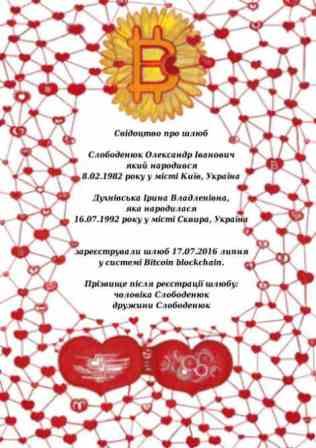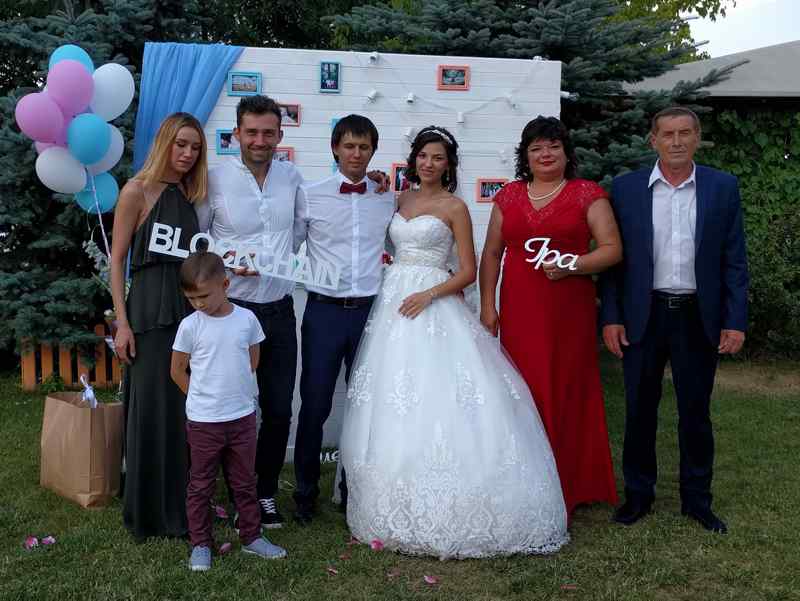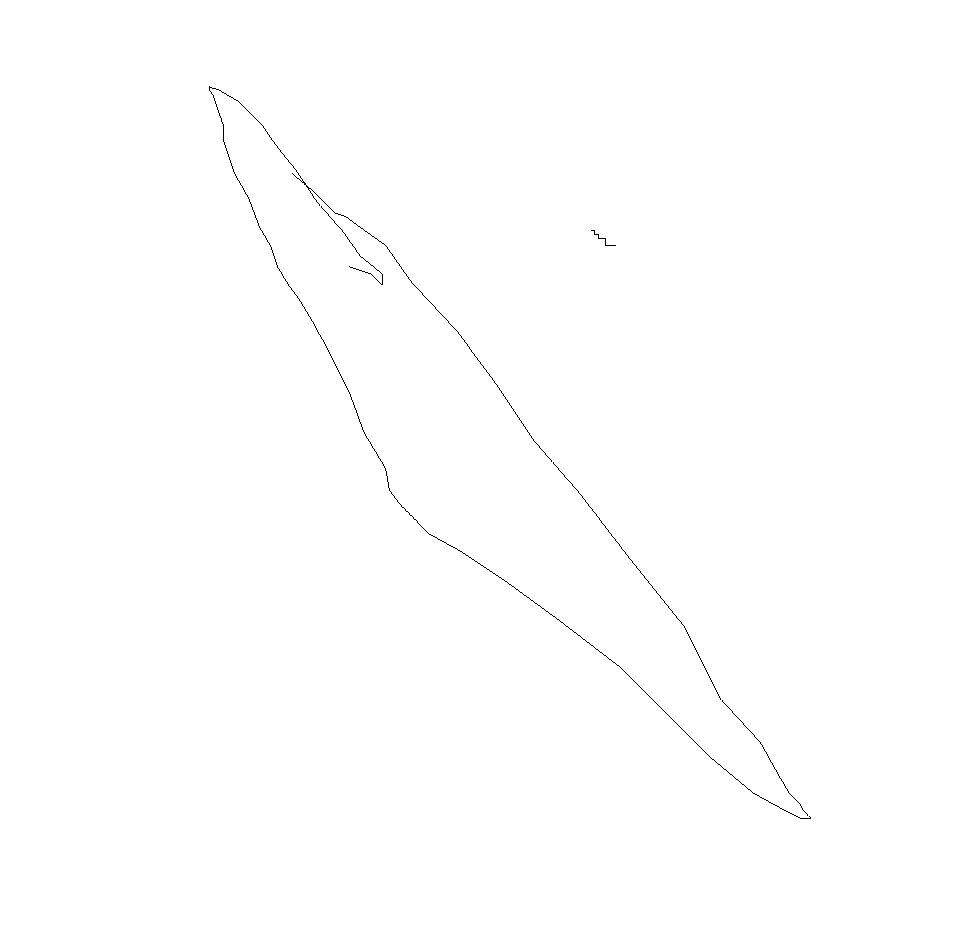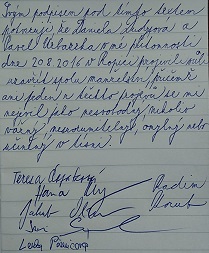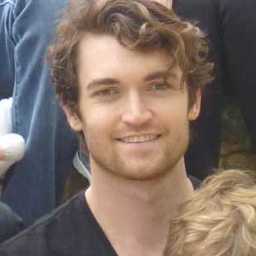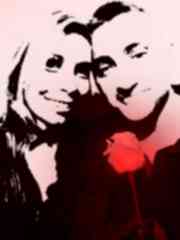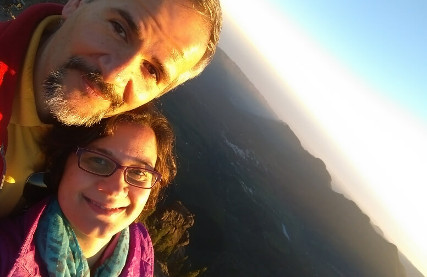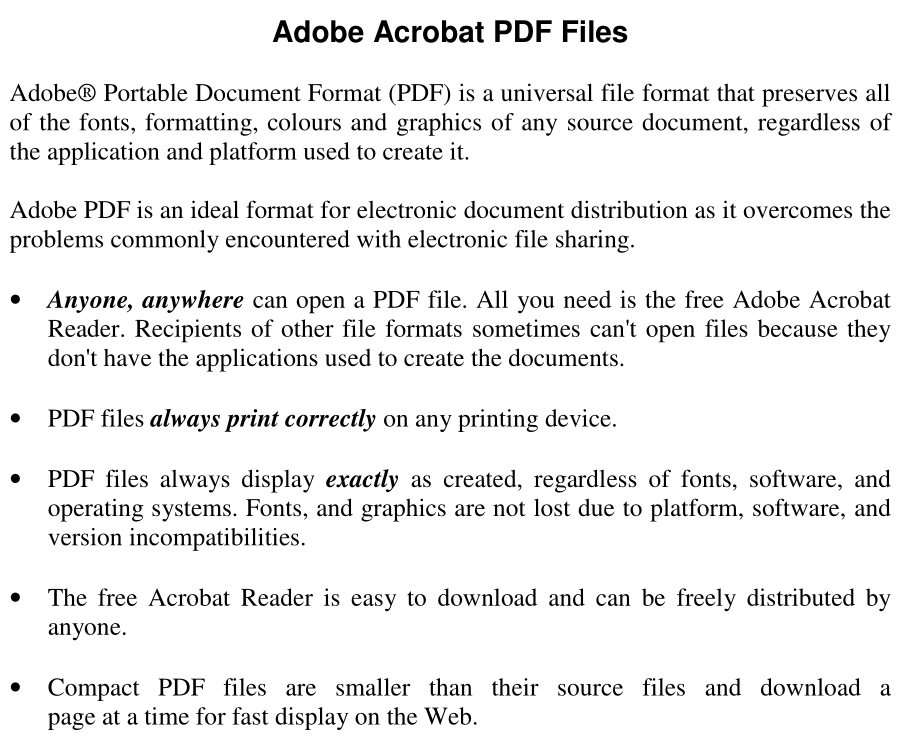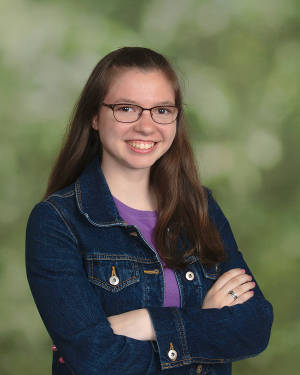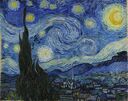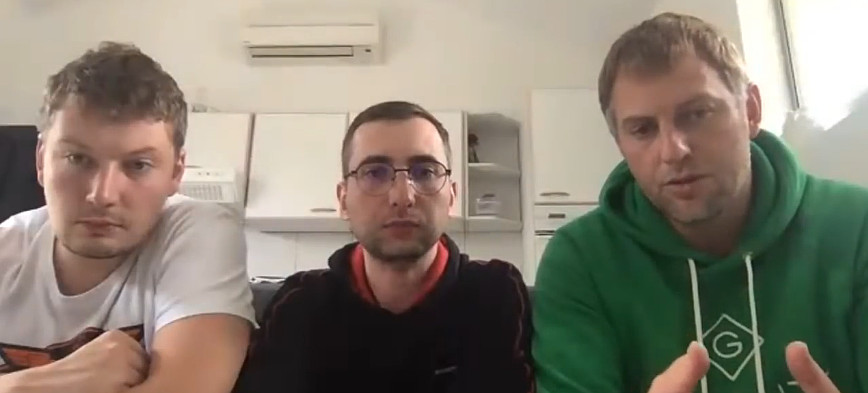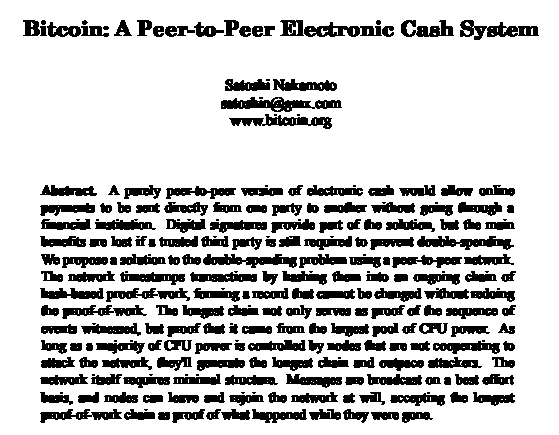Cool data embedded in the Bitcoin blockchain Incoming links Updated 2025-07-26
By Ciro Santilli:
- 2021-04-13 twitter.com/cirosantilli/status/1382067162492366854: main initial announcement on Twitter. twitter.com/mikko, who has 209.9K followers and a Wikipedia page: Mikko Hypponen hearted the tweet s2
- 2023-01-21 twitter.com/cirosantilli/status/1749172304259535063: improvements to the Prayer wars
- 2024-02-07 twitter.com/cirosantilli/status/1755378931446739373: large-ish update with new items and improved organization
- 2024-03-31 twitter.com/cirosantilli/status/1774531934305071295: binwalk discoveries, start poking a bit into ordinal ruleset inscriptions
- 2024-04-04 twitter.com/cirosantilli/status/1775805941885108392: largest text ordinal inscription
By others:
- 2021-04-15 news.ycombinator.com/item?id=26801067 (96 points) on Hacker News. Reached position 16 at one point: archive.ph/L0Fte and led to about 5k views total. Ah, Ciro could watch that Google Analytics realtime view go bling all day long. Narcissism is a bitch.
- 2021 cryptonewmedia.press/tankman-image-on-bitcoin-blockchain/ by user igadjeed
- 2022-01-23 news.ycombinator.com/item?id=30050479 "Abuse and Harassment on the Blockchain", comment-mid thread
- 2022-01-24 www.reddit.com/r/Buttcoin/comments/sbw0se/when_i_heard_about_nfts_i_thought_they_were/hu2uk8g "When I heard about NFTs, I thought they were stupid, but then I watched a video explaining how they work, it really changed my perspective", comment mid-thread
- 2023-02 lots of Twitter backlinks as a result of ordinal ruleset inscriptions:
- 2023-02-03
Video 1. . Source. Features Marijuana plant and Rickrolling sections. He seems to be a finance guru. - 2023-02-07 twitter.com/privateid_ntity/status/1622814063331004421
- 2024-01-18 twitter.com/pete_rizzo_/status/1748049913286447355 by Rizzo, The Bitcoin Historian (81k followers, mid-thread)
- 2024-12-29: x.com/lopp/status/1873453363523932630 by Jameson Lopp (492k subscribers)
- ? cloudhiker.net/ A hand curated and categorized list of interesting links by Kevin Woblick. Only allows users to visit a random one per category, so we can't get proof of backlink, this was noticed through Google Analytics.
- 2025-03-18 Bitcoin Burn Addresses: Unveiling the Permanent Losses and Their Underlying Causes
The mention of this project is brief:Announced at:Ciro Santilli maintains a Web page listing arbitrary data embedded in the Bitcoin blockchain. This is the most complete and up-to-date list of arbitrary data we are aware of. However, he does not specifically focus on burn addresses, but on the stored contents.
- 2025-03-28 x.com/punk3606/status/1905295370227155344 quick "this was already discovered" mention on thread x.com/I____felix____I/status/1905291048798106061 where a dude rediscovers Figure "Warren Buffet"
- 2025-07-20 www.youtube.com/watch?v=oFrK2tpat8c Uncovering Hidden Messages in Bitcoin by Th3M0rn1ng5h0w
Shiemaa&Vincent.jpgMessage:TODO identify Shiemaa and Vincent.
tx 36d0d77acd760f0aa549b6b314f0c1e9690baa6bcc2d0f07ea9f3167f4a5ec99, block 318836 (2014-09-03)Cost: ~0.002 BTC ~ $0.77 at the time.
Several other interesting uploads were also made around block 318836 (September 2014):
RedRaven.jpgbitfossil.org/e17b83234402d85f3a18207eec11bc5c4397f88aa880aae4fb7d15802806a971/index.htmEarth3Archive.jpgbitfossil.org/ae8d3b46b934bedc363e11abe8c8607171994470957c286274f699a0b3a9bbd7/index.htmSkyEarth5Archive.jpgbitfossil.org/ae8d3b46b934bedc363e11abe8c8607171994470957c286274f699a0b3a9bbd7/index.htm
BikeLady.jpgBike Lady by Allen Lee Vandever. tx 2c4b9497af8c0c0eb9383357b40c3de33dba0b4f481099a32719f2b9036da8e7, block 319927 (2014-09-10)
This seems to be a novel work uploaded by its creator artist Allen Vandever according to EMBII.[ref].
Arecibo_message.svgArecibo message on tx c6d2e535cd2ba4659e954a61198c66fd98c60f6475cf8ff92a404f3fe3a16c4b, block 337874 (2015-01-07)
An "artificially" colored visualization of the Arecibo message ripped from Wikipedia: en.wikipedia.org/wiki/File:Arecibo_message.svg (with attribution).
The cool thing about this image is that it highlights the striking parallels between the encoding of the Arecibo message with crypto graffiti, because in both cases people were creating undocumented new ways of communicating with strangers on a new medium in those early blockchain days.
The associated message contains the Arecibo message as ASCII 0's and 1's. When properly cut at the newlines, they draw the message as ASCII art, as the original Arecibo encoding intends, here's a version with the 0's replaced by spaces to make it more readabale:
1 1 1 1
1 1 1 1 1
1 1 1 1 1 11 1
1 1 1 1 1 1 1 1 1 1
11
11 1
11 1
1 1 1
11111
11 111 11 11
1 11 1
11 1 11 11 11 1
11111 11111 11111 11111
1 1
1 1
11111 11111
11 11 111 11
1 1 1
11 1 11 111 11 1
11111 11111 11111 11111
1 11 1
11
1 11 1
11111 11 11111
11
1 1 1
1 11 1
11 11 1
11 1 11
11 11
11 1 11
11 11 1
1 1 1
1 11 1
1 11 1
1 1 1
1 1 1
1 11
11 11
1 111 1 11
1 1
1 11111
1 1 111 1 1 11 11
1 111 1 111111
1 111 111 11 111
1 1 111 11
1 1 1 111111
1 1 1 11
1 11 11
111 1
111 1 1 1 1 1 1 1 1
111 1 1 1 1
1 1
11111
111111111
111 111
11 11
11 1 1 11
11 11 11 11
1 1 1 1 1 1
1 1 1 1 1 1
1 1 1 1
1 1 1
1 1
1 1 1
1111 11111 1 1111He sleeps in a temple.jpgDr_Craig_Wright.jpg
. Source. Associated message:
The image is present e.g. at: www.kitguru.net/channel/jon-martindale/australian-man-claims-he-is-satoshi-nakamoto-bitcoin-creator/ It was inscribed about two months after Craig publicly claimed that he is Satoshi.
This is a relatively unusual AtomSea & EMBII upload as it does not have the common toplevel transaction, everything, text + image fits into a single transaction. This is perhaps why the image is relatively low resolution to have a smaller size.
YellowRobot.jpgYellow Robot on tx 67b2facfd8160d4fa11b02829b6387d07537b57a7a24f19b029b2a5ae7b81830, block 450516 (2017-01-29)
The associated message reads:This is one of Ciro's favorite AtomSea & EMBII uploads. This is the cutest thing ever, and perfectly encapsules the "medium as an artform" approach to blockchain art. More Chiharu stalking at: ILoveYouMore.jpg.
Chiharu and I found this little yellow robot while exploring Chicago. It will be covered by tar or eventually removed but this tribute will remain. N 41.880778 E -87.629210
At twitter.com/EMBII4U/status/1615389973343268871 EMBII announced that he would be giving off shares of that image on a Bitcoin-based NFT sale system he's making called Sup!?, and in December 2023 gave 2/300 shares to Ciro Santilli. Amen. The transaction list can be seen on the web UI at: p2fk.io/GetObjectByAddress/1KUyhHLrK1ckY8W7Qu31h6gFkXoihWHMzi?mainnet=true&verbose=true It had unfortunately never sold as of 2025, the only activity was EMBII giving off some shares and two listings of 1/300 for 1 BTC. Poor EMBII!
Other possibly novel EMBII street photography:
- bitfossil.com/f2efd446475ad58a3ea808cc0f05a63c55cece9fced70d84799a1ffce5d307e4/index.htm "I will not Stop until the Finite becomes the Infinite."
Audio:
alien.wavblock 318638 bitfossil.org/a3a24d6ea01ce481a50346818b8977220687f3ba385838fe8894ce61c9718bbc/OneGiantLeapForMankind.mp3at tx 4f5b25fa8021c67235423930580e69121aa0d2c2bb779f75139bf442f8dc7297 EMBII-indexed at 743f3286b00fc96c13db4b16d5aead8a1e059fee9ce775b1761be9be5bdc2501 and then indexed at: 0427ec598df38b7d7dc75721316c0bbdec54de4871e11aff8ea64f3717c07efbThe toplevel index does appear on Bitfossil: bitfossil.org/0427ec598df38b7d7dc75721316c0bbdec54de4871e11aff8ea64f3717c07efb/index.htm but the audio is not there as it was for Spock below, maybe a bug on upload/Bitfossil?Spock_Live_Long_And_Prosper.mp3block 345858 bitfossil.org/1bc87dbff1ff5831287f62ac7cf95579794e4386688479bab66174963f9a4a0c/index.htm. Audio of Mr. Spock saying the Vulcan salute.OuterSpace.mp3block 409471 bitfossil.org/c14c1bd862bab6269052bf0a2cda7a35940d7a2d9c3415d4fb8fb8dcb9394fae/ "Outer Space by embii 4MB Large file storage test Apertus 0.3.5-beta" OMG, I don't want to calculate how much it cost to upload this, it will make me sad.At twitter.com/EMBII4U/status/1655969645927563266 EMBII mentions that this inscription, made by him, is the largest inscription he knows of.TODO song composer/performer?- bitfossil.com/c2b170ff450f4529dfbd784e0cf5cdddaca494e67a243dd846c0a9450a5558af/ (2021-03-13) contains
Seikilos.mid, a MIDI file
Interesting text:
- block 273522 bitfossil.org/70fd289901bae0409f27237506c330588d917716944c6359a8711b0ad6b4ce76/index.htm pi to 1000+ decimal digits:
- bitfossil.org/8522787e7e49f3f3b6a9f9e86bc30336d26a3acbaecc93809d2e8b4bb1c4d611/ "Antarctic Ice Cores Revised 800KYr CO2 Data" evidence for global warming
- bitfossil.org/ffa6893a70bcde9b940df9823e0f597f0b6cff964c78473c77db838655e1aeb5/ en.wikipedia.org/wiki/Laudato_si', global warming related
HTML pages:
- block 335290 bitfossil.org/0166db6053f1969c28de8b1f9a8fa4ec890cc4bdfee7602757993b306bb7f295/ JavaScript animated timer clock counting down until the start of the next year
- block 340379 bitfossil.org/062990d54045a9c316110fb713009d1313b2f64c4b216d66891c7284d6c1ca0e/ links to bitfossil.org/062990d54045a9c316110fb713009d1313b2f64c4b216d66891c7284d6c1ca0e/bong-ball.html and has a working JavaScript Pong
- block 328445
tom-signature.jpgbitfossil.org/daa050bf8ac22752e40412c9265b4533f68ab8e6ed26d2db1eeee6710e7d9e4b/index.htm Unrendered HTML of:Likely an obituary for: Thomas L. Magliozzi. Images show fine though.- www.cartalk.com/content/tom-and-rays-bios-photos-2
- www.cartalk.com/content/rant-and-rave-36 "The New Theory of Learning" which agrees perfectly with backward design
- block 401648 bitfossil.com/31c5e5336512568e4a1deb4bbf0e57c3565c32094c0e1a118c48e7929ab49e35/bong-ball.html another one! This one is full-screen, and does not have JavaScript
alerts :-) - block 401657 bitfossil.org/03cb74f270d498302d4dd9cbe82c090d801c8840ab6cb26b71d862489b981db8/ has a JavaScript Pac-Man
Text is the only reasonbly interesting content that Ciro Santilli has seen in the ordinals, as opposed to images which are boring. They haven'g found a way to commercialize it yet it seems, thank God. Glad to have researcehd this a bit!
The largest inscriptions with mime
text/* are:- ordinals.com/inscription/e15e19c587985e7dbb0554a6b51df976fdc8d95f4350b759c10b07399d34a7bbi0: 395,253 bytes (2023-02-23): an English translation of Mein Kampf by Adolf Hitler starting from the "Author's preface" section to the end of Chapter V. This seems to be the text: gutenberg.net.au/ebooks02/0200601.txt gutenberg.net.au/ebooks02/0200601.txt. Likely someone trying to be naughty, on the same vein as the "Hitler did nothing wrong" meme from previous eras
- ordinals.com/inscription/daed32652a82fa809be265a9a082d31e186b2b3c0cec80b52dc30e3c1c856c66i0: 394,346 bytes (2023-02-21): Mein Kempt just like ordinals.com/inscription/e15e19c587985e7dbb0554a6b51df976fdc8d95f4350b759c10b07399d34a7bbi0 but with the HTML in a single line, so it is slightly smaller
- ordinals.com/inscription/95f6909988dba38f1140d536c9cc2fdcf635c1522f93834045b093f0d4c2fdd7i0: 394,053 bytes (2023-02-21): HTML heart shaped index of the "Insignia Art" ordinal collection: ordinalswallet.com/collection/insignia-art. That one is kind of cool actually.
- ordinals.com/inscription/8af62aed75fdd9262d36d428a209a162394f0f463bf261ea253d0fb009f2277fi0: 392,866 bytes (2023-09-29) Majjhima Nikāya (Collection of Middle-length Discourses), Buddhist text that is part of the Pali Canon, the most original Buddhist scriptures. EMBII's inscription of the Bhagavad Gita comes to mind. Both Pali transliteration and English translation are present side-by-side.
- ordinals.com/inscription/6352b23c10ef20321d59735d8597af9be96db1bab4b50d728e618a1c5a21a991i0: 391,053 bytes (2023-03-03) "Satoshi Wars" Star Wars-themed browser game. It is a mouse-controlled Pong clone
- ordinals.com/inscription/ab420f90306948937432379dc3f768ef5f826714f53e0cea4e641debef460173i0: 389,001 bytes (2023-02-19) "The Anarchist Cookbook by William Powell". People trying to be semi-naughty as usual.
- ordinals.com/inscription/d8ef417a8575e0fa3da7ab11f9e91ef7582c7275f54f8b9dc587c98c676bd41ci0: 388,196 bytes (2023-02-12)
This fully on-chain document contains all of Satoshi Nakamoto's posts on Bitcointalk.
- ordinals.com/inscription/2a260692fd8aca7fc5f825fe7965c914615fe1d62f7d3e5b078228d43fd93243i0: 387,818 bytes (2023-04-06) an HTML page, title:It seems t oallow you to upload images and reads metadata from the image. Didn't work too well on ordinals.com possibly due to narrow display port. Also it has a funny background music :-)
Welcome to the on-chain Pixogette Metadata Reader
- ordinals.com/inscription/a31b8e3e279a6e28ef49fa4dca54f820abf266223976b778833e8c47991ad403i0: 386,913 bytes (2023-02-19) a cute Bitcoin Cash ad:It appears to contain the entire first fork block of Bitcoi Cash from mainline bitcoin.
#!/bin/bash # # ____ _ _ _ ____ _ # | __ ) (_) | |_ ___ ___ (_) _ __ / ___| __ _ ___ | |__ # | _ \ | | | __| / __| / _ \ | | | '_ \ | | / _` | / __| | '_ \ # | |_) | | | | |_ | (__ | (_) | | | | | | | | |___ | (_| | \__ \ | | | | # |____/ |_| \__| \___| \___/ |_| |_| |_| \____| \__,_| |___/ |_| |_| # # ___ _ _ # |_ _| _ __ __| | ___ _ __ ___ _ __ __| | ___ _ __ ___ ___ # | | | '_ \ / _` | / _ \ | '_ \ / _ \ | '_ \ / _` | / _ \ | '_ \ / __| / _ \ # | | | | | | | (_| | | __/ | |_) | | __/ | | | | | (_| | | __/ | | | | | (__ | __/ # |___| |_| |_| \__,_| \___| | .__/ \___| |_| |_| \__,_| \___| |_| |_| \___| \___| # |_| # ____ _ _ # | __ ) | | ___ ___ | | __ # | _ \ | | / _ \ / __| | |/ / # | |_) | | | | (_) | | (__ | < # |____/ |_| \___/ \___| |_|\_\ - ordinals.com/inscription/f7ece21e1dc74874d7a6e5e11b77941be2db6f383d053242a40b63e0a28445ffi0: 386,819 bytes (2023-02-18) The Illiad Books I-XII
- ordinals.com/inscription/4f5e52115ef0fb4fc2a18cfc7f4caccfb712792c8bc318e71699a86ba4541719i0: 386,655 bytes (2023-08-09) Frogger browser clone
- ordinals.com/inscription/f04c0e94023e51fb995e48235773c77a471289baf44c1a3248d800a0a550c520i0: 385,743 bytes (2023-03-25) A Roguelike browser game
- ordinals.com/inscription/cd432a3e16c4a01db1df6a59b5941a69bd0cf130b24a61248643005f22a939d9i0: 383,098 (2023-02-18) Brave New World
Cool data embedded in the Bitcoin blockchain Ordinal ruleset inscription Updated 2025-07-16
Ordinals are inscriptions created with the protocol described at: docs.ordinals.com/inscriptions.html The protocol was designed by developer Casey Rodarmor, and shares a few similarities with the AtomSea & EMBII protocol.
The protocol also includes a way to have ownership over inscriptions, effectively creating an NFT system on top of the bitcoin blockchain. AtomSea & EMBII also already had such a system however. In either case, Ciro Santilli couldn't give less of a fuck about who owns some random publicly viewable digital asset.
For whatever reason, orinals became extremelly popular compared to the AtomSea & EMBII format, leading to millions os inscriptions, and 10k+ images as of block 830k. They also started to take up a substatial portion of the available block space.
This in turn led to a lot of child porn rediscussion, and people linking back to this page to view earlier inscriptions: incoming links.
Unfortunately, unlike AtomSea & EMBII and even cryptograffiti.info uploads, most ordinals are designed to be just souless bulk collectibles, as with as much artistic merit as any random collectible card set or postage stamps you may find at a newpaper stall. To make things worse many of them are likely algorithmically generated. Eternal September had truly arrived to the Bitcoin blockchain. As a result, machine learning would be almost essential in order to find interesting uploads amidst such bulk.
Ordinal #0
. This is the first ordinal ruleset inscription: ordinals.com/inscription/6fb976ab49dcec017f1e201e84395983204ae1a7c2abf7ced0a85d692e442799i0. It was made on block 767430 (2022-12-14).The
i0 at the end of the URL above means "inscription 0". This is because a single transaction can have multiple inscriptions.The ordinals also started taking up large portions of the Bitcoin blockchain:
Apparently the "Taproot" Bitcoin update made it easier to upload image-sized data once again, which had become prohibitively expensive 2023 and much earlier:
- protos.com/did-taproot-ruin-bitcoin-with-nft-inscriptions-of-monkey-jpegs/
- ordinals.com/ appears to index some types of ordinals
Bibliography:
- blocktelegraph.io/parent-child-bitcoin-inscriptions/ parent-child relationshipsi are possible between two ordinals
- ordinals.com/
- bitcoin.stackexchange.com/questions/117018/understanding-how-ordinals-work-with-the-bitcoin-blockchain-what-is-exactly-sto
- bitcoin.stackexchange.com/questions/118405/read-ordinal-transaction-data
- bitcoin.stackexchange.com/questions/118247/can-someone-explain-the-byte-composition-of-an-inscription-reveal-transaction
- nftnow.com/guides/bitcoin-nfts-most-notable-ordinals-inscriptions/
Cool data embedded in the Bitcoin blockchain Raw images Updated 2025-11-18
In this section contains a list of images we could find that wre uploaded as raw data to the blockchain, without any special encoding, e.g. as done by the AtomSea & EMBII system.
It is possible that some/most of those were uploaded via the cryptograffiti.info system, but since that indexer stopped working, and since the format is so non-specific, it is not possible be sure as far as we can tell.
These images were indexed by looking for standard transaction output script hashes that contain JPEG or PNG images immediately on the first payload byte based on file signature bytes and indexed/easily downloaded at github.com/cirosantilli/bitcoin-inscription-indexer#image-indexing-and-download.
western-union-bitcoin-spoof.jpg.gz
. 200f3f6f8a91ae438d1924e5cedca98cea7f0197b9eba11343948b5621ca19ed block 331804 (2014-11-27) JPEG in Gzip as a single input script constant.
This ad highlights one of the claimed potential advantages of Bitcoin: cheaper/faster cross border transactions.
This inscription is highlighted at Data Insertion in Bitcoin's Blockchain by Andrew Sward, Vecna OP_0 and Forrest Stonedahl. Finding Gzips with binwalk is hard because the file signature is only 2 bytes long (1F 8B), so there are lots of false positives.
Gzip binary uploaded at: raw.githubusercontent.com/cirosantilli/media/master/bitcoin-inscription-indexer/data/bin/200f3f6f8a91ae438d1924e5cedca98cea7f0197b9eba11343948b5621ca19ed.jpg.gz gunzip 1.12 complains:but we were not able to fix that: removing bytes at the end goes straight from "trailing garbage" to "incomplete file" after a certain byte.
western-union-bitcoin-spoof.jpg.gz: decompression OK, trailing garbage ignoredSuper Mario coin sprite
. tx bf7ef3216ae09f8252c76e7d0031bc4aa131a23a6900f8371c44ffde7957c8da (2015-03-01). Possibly from Super Mario World for the SNES (1990). No doubt a self-reference to Bitcoin itself. Encoded as a data URL for a PNG image:<img src="data:image/png;base64,JPG thumbnail
. Presumably a JPEG upload test. tx 515a95381e511141229966d722db19db7da66a0d629b1f883d296287632e72b3, block 349362 (2015-03-26) via cryptograffiti.info.A heart next to a bitcoin logo and written "we love bitcoin". Reproduced at: kryptomoney.com/grayscale-report-institutional-investors-retirement-funds-love-bitcoin/
Embedded in the image itself, there's a message in the header comments:which is the opening paragraph of: bitcoin.org/en/
Bitcoin uses peer-to-peer technology to operate with no central authority or banks
tx b70bfe6a9b314611655554576feb11f15d47b9e80c5993e91829bb87895ef23c block 355899 (2015-05-11). PNG inscribed as a Daisy chain Bitcoin inscription using OP_RETURN.
The daisy then follows up to the Figure 6. "City of London School logo", which therefore must be by the same uploader.
City of London School logo
. tx 6ab2f3dbff0ebd856f6cf0360fc7db987f8789508dfdefdcc1f9e2aacf9ac0de block 355901 (2015-05-11). PNG inscribed as a Daisy chain Bitcoin inscription using OP_RETURN.
This image is encoded on the very same daisy chain as Figure 5. "The Economist logo", immediately afterwards.
The transactions leading up to b70bfe6a9b314611655554576feb11f15d47b9e80c5993e91829bb87895ef23c contain multiple text daisy inscriptions that show up on our text dumps at: github.com/cirosantilli/bitcoin-inscription-indexer/blob/e716e317b703e1bad63edf5064f90f5e80c5aaf5/data/out/0355.txt#L635
- 5256d3059520c9ecda22bcf17776adcc962a5ae90333efbb00cf45818e9bf0bb:then a quote from bitcoin.org/en/faq (archive):
You're poo you're papa, says WeeWaWeeWa
then:Bitcoin is the first implementation of a concept called "cryptocurrency", which was first described in 1998 by Wei Dai on the cypherpunks mailing list, suggesting the idea of a new form of money that uses cryptography to control its creation and transactions, rather than a central authority. The first Bitcoin specification and proof of concept was published in 2009 in a cryptography mailing list by Satoshi Nakamoto. Satoshi left the project in late 2010 without revealing much about himself. The community has since grown exponentially with many developers working on Bitcoin.
And now, via JSON-RPC!
- d6b006f3cd9b545d5015263e954dae7c52c71bb5f4a0573918ff0e1ce8785de4 contains another quote from bitcoin.org/en/faq (archive):followed by:
Much of the trust in Bitcoin comes from the fact that it requires no trust at all. Bitcoin is fully open-source and decentralized. This means that anyone has access to the entire source code at any time. Any developer in the world can therefore verify exactly how Bitcoin works. All transactions and bitcoins issued into existence can be transparently consulted in real-time by anyone. All payments can be made without reliance on a third party and the whole system is protected by heavily peer-reviewed cryptographic algorithms like those used for online banking. No organization or individual can control Bitcoin, and the network remains secure even if not all of its users can be trusted.
One day this will be for general storage
- d9450fbd228d7a19d08f700d43200184b0d46561ffd7eb9ddbb378435ec66789 says:These inscriptions were made right in the midst of the protests against larger block sizes.
Let's agree on 5MB blocks and move on?
- a689707f77882eb5a3b1954747f159b1c22b688a57ec17b4d636b7f94e451e3dthen the intro from bitcoin.org/en/ (archive):then:
Bitcoin uses peer-to-peer technology to operate with no central authority or banks; managing transactions and the issuing of bitcoins is carried out collectively by the network.
Parents daisy more text visible on our text dumps: www.blockchain.com/explorer/transactions/btc/b70bfe6a9b314611655554576feb11f15d47b9e80c5993e91829bb87895ef23cIt's my cake day. I pressed the button. I have no regrets. Just stick it on the blockchain
Iranian lady with polar bear hat.
tx b673c7d0c62cce8315ad6cc63a2c8ca8169bf73432435760b808735e1a7fe0e2 block 401255 (2016-03-05). JPEG encoded with daisy chain Bitcoin inscription using OP_RETURN.
The image data is cut in half. This makes the image an invalid JPEG, but ImageMagick is able to recover and convert to a valid image which is what we show here to make it portable to more browsers. The raw invalid image is present at: raw.githubusercontent.com/cirosantilli/media/master/bitcoin-inscription-indexer/data/bin/b673c7d0c62cce8315ad6cc63a2c8ca8169bf73432435760b808735e1a7fe0e2.jpg, but it can also be generally viewed by most viewers.
This embedding uses a novel more specialiezd protocol on top of a raw daisy chain Bitcoin inscription.
The daisy actually starts at f49e79889b34d355fa8a02f13b9db4ed69c067f975e25339737ef10e4b993d7a and data is encoded as follows:
OP_RETURN 62 00000000 48656c6c6f20776f726c64212052657475726e20626c6f622070726f746f636f6c2076
OP_RETURN 62 00000001 313a204d41474943203d20307836322c205041434b414745203d2075696e7431362c20
OP_RETURN 62 00000002 53455155454e4345203d2075696e7431362c205041594c4f4144203d20757020746f20
OP_RETURN 62 00000000 48656c6c6f20776f726c64212052657475726e20626c6f622070726f746f636f6c2076
OP_RETURN 62 00000001 313a204d41474943203d20307836322c205041434b414745203d2075696e7431362c20
OP_RETURN 62 00000002 53455155454e4345203d2075696e7431362c205041594c4f4144203d20757020746f20
OP_RETURN 62 00000003 33352062797465732e0a
OP_RETURN 62 00010000 ffd8ffe1001845786966000049492a00080000000000000000000000ffec0011447563
OP_RETURN 62 00010001 6b79000100040000003c0000ffe1039a687474703a2f2f6e732e61646f62652e636f6d
OP_RETURN 62 00010002 2f7861702f312e302f003c3f787061636b657420626567696e3d22efbbbf222069643d
OP_RETURN 62 00010003 2257354d304d7043656869487a7265537a4e54637a6b633964223f3e203c783a786d70
...
OP_RETURN 62 00010085 51290358a41fe5408b4435254208d4810a5fe9113044c1ae3aa544656d729756395b87
OP_RETURN 62 00010086 c4e261f55c5d19e1c792c3f78adff1368db58e5a0bb85b2c6753c42de6d973edae0642
OP_RETURN 62 00010087 1b2c8370f203aaa0a6eb7ea0871d8e9ae6534b785b57347171e4df6a5463d7ce77b93b
OP_RETURN 62 00010088 9b8bf96edd1b982e2474a41ad28e3c01e74586d1d1ad7a874c5a1b7c742d2285c371f6The first block is:which then gets repeated, probably an error, but now with the sentence completed:This therefore gives us the name of the protocol as "return blob protocol". We also understand that the 0x62 was aconfiguration parameter.
Hello world! Return blob protocol v1: MAGIC = 0x62, PACKAGE = uint16, SEQUENCE = uint16, PAYLOAD = up to
Hello world! Return blob protocol v1: MAGIC = 0x62, PACKAGE = uint16, SEQUENCE = uint16, PAYLOAD = up to 35 bytes
ffd8ffe1 marks the start of the JPEG.If the rest of the image were inscribed somewhere random in the blockchain, we'd expect to find the string
6200010089 containing the netxt data chunck on a nearby block, but bgrep did not find it, so perhaps the data just isn't there.The last tx of the daisy is 43b182065ab2c7d1908ec3cee756d9f626c1e4bd1efa17a7c3993433b653d499 which is followed by 9e6838a3545bd59a708d0c177d6840c7d82b8ac6220138ca3d8133a1376405aa which does not contain any data.
Erich Erstu
. Alias: 1Hyena. A well built man wearing a gas mask. Google image search leads to: github.com/1Hyena (archive), who is the creator of cryptograffiti.info. It was around after this time that the number of raw images surged dramatically in the blockchain, so it is possible that this is when the service started operating. This further suggests that most raw image uploads we found were made with cryptograffiti.info. tx c206e8fff656f07b27dac831ef9b956792bae4e76a2cb43f14f49f0298bf2c2f, block 416527 (2016-06-16). Embedded text:Hyena was here on the 16th of June 2016.
Water Deer
. badtaxidermy.com "Water Deer" image, visible at: web.archive.org/web/20200527070011/http://www.badtaxidermy.com/?page=3. tx 357e8ae080e5a1b554eaec2953e3e6e2e7955f3af4559dd0f1bc6381d56aa183, block 416735 (2016-06-16) via cryptograffiti.info. The file contains the strings:www.badtaxidermy.com
Cryptograffiti.info now allows you to attach JPEG images to your messages.
hotmine.io
. A mining supplier: hotmine.io/en. twitter.com/uahotmine. tx 8ec01c5e8f3b57adb13079af3b7e40e7acd3986a5ed14325388405771bd43f9b, block 416835 (2016-06-18) via cryptograffiti.info. The file contains the following string embedded into it:Smart Heating, Bitcoin Mining For You - en.hotmine.io
Nada from They Live (1988)
tx 83df1e5ecc1c7ac455d2855e15cff8fa5771afe2ad1796c8b6b1a8e910e829c4, block 416896 (2016-06-18) via cryptograffiti.info. The file has the following string embedded into it:which is a reference to Nada's original dialogue:
Cryptocurrency Minning ad
. Twitter "@dobcrypto": twitter.com/dobcrypto Reuploaded at: imgur.com/gallery/00oOuhm. tx eda07af9584391bb6f5ebb07ba57a51b610751fdf06ae49d9166225c36d97d0b, block 417111 (2016-06-20) via cryptograffiti.info. The file contains the following string:Subscribe, I will be glad to see you! www.youtube.com/c/dobcryptocurrency
Chinese wedding
. tx 609d5e0f968c0ab7abc2be21468cfd552483d38b08e6df23d27766eb61b9be3c, block 417131 (2016-06-20) via cryptograffiti.info.
A white man and a Chinese woman wearing Chinese traditional dressess holding hands, presumably a token from their wedding. A Chinese poem is visible next to them, with four vertical setences made up of 7 characters each, to be read from right to left. This is a classic Classical Chinese poetry form known as qijue.
A photo of a snowy mountain is shown in the background, fitting the theme of the poem. It looks like an European mountain, possibly Mont Blanc? TODO identify. Perhaps a reference to the nationality of the husband.
TODO transcribe the Chinese text, cursive grass script + traditional characters + ultra-low res put this beyond Ciro Santilli's capabilities/patience ratio. Ciro Santilli's wife's transcribed gave the first column as:and no Google hits, so maybe an original poem? What a hero. TODO transcribe the rest.
The image file contains the English transalation of the Chinese poem embeded into it:
A scarlet gemstone hides quietly in the midst of the mountains.
Its beauty softly enters the wanderer's dreams.
Fame and fortune become like drifting clouds
But the gem endures like the constellations above.
Superbuffo
. Googling gives a Toni Caradonna: twitter.com/superbuffo. At twitter.com/Superbuffo/status/1620900765014556672 that twitter account claimed the art or its depiction. www.imdb.com/name/nm9516368/ has some obscure references to him. tx 6240f61bbaeac66cd623e921a153addaf5f379a996f2de0f0c6506d628fe3812, block 417354 (2016-06-21) via cryptograffiti.info. The file contains the following string embedded into it, in addition to a lot of Adobe boilerplate:Superbuffo the first comedian on the blockchain
Rene Angelil and Celine Dion
. Reproduced at: web.archive.org/web/20191130174338/https://people.com/celebrity/inside-celine-dion-and-rene-angelils-21-year-marriage/ but cropped to faces. tx e2e5b9cf04d93ae5fc1b54e9208b92b668823e014b251f57510e4702661fa1a6, block 417272 (2016-06-21) via cryptograffiti.info. Embedded text:You will be here forever
New Age dance
. Woman dancing a New Age-like dance with New Age-like Indian looking clothes, holding a lamp, and with a rose on her hair. TODO identify. tx 0602dd1b375bc71818db0a40d7a14f438499af3eda9056125eb5a1b74bed790b, block 419676 (2016-07-07) via cryptograffiti.info. The image contains the following text embedded into it (TODO unknown mechanism, does not show up on exifTool:No alcohol and smoking since 07.07.2016. Love girls!
Snake penetration sculputure
. Sculpture of what seems to be a snake penetrating a vagina. tx 83f412eb7ff40fe542901186a6d37cba0eb4f8458c574bc02a6f7236c599fe07, block 420122 (2016-07-10) via cryptograffiti.info.Wedding invitation
. TODO: make out names, quite low res, no patience. Looks like Cyrillic script. tx 01c3af71c12d49260231dcb3cc86d6ff21b3cd90878e9556482ef3b0908abffe, block 420960 (2016-07-16) via cryptograffiti.info.Wedding Wallled 15Nz214yv76BmkKLCi8kAVssa5C7nQHLjx
Oles Slobodenyuk
. tx 10cc5d45396ba271659a4b00d2f70c433533227e5f7ea30bb5bd3c8563d7468a, Block 421280 (2016-07-18) via cryptograffiti.info
Wedding picture with people holding "Blockchain" and "Ipa" signs.
Reproduced at: web.archive.org/web/20200926150213/https://freebitcoins.com.ua/zapushhen-ukrainskij-bitkoin-pul-bitcoinukraine/ Google translate:
Oles is for example featured at: uk.sports.yahoo.com/news/bitcoin-miners-heating-homes-free-133053106.html Bitcoin Miners Are Heating Homes Free of Charge in Frigid Siberia by Anna Baydakova (2019)
The image file contains the following text embedded into it:The link is dead of course.
<Wedding date: Jul 17, 2016
proof link goo.gl/photos/2GToBx1WqRyiQtxQ6
Nematode
. A... nematode-like shaped hand drawn extremely simple image? A test upload presumably? The squiggle outside of the worm might be a test direction marker. tx 554846025e808df7adec3b1d099e3d4d54b7367cddaa959939cb5ca0fc6abf7b, block 424414 (2016-08-09) via cryptograffiti.info. The image file contains the following string embedded into it:Hand written contract
. Wedding contract written in Czech. Transcription and translation by Petr Kadlec:Translation:Signatures:
Svým podpisem pod tímto textem potvrzuji, že Daniela Dudysová a Pavel Urbaczka v mé přítomnosti dne 20.8.2016 v Ropici projevili vůli uzavřít spolu manželství, přičemž ani jeden z těchto projevů se mi nejevil jako nesvobodný, nikoliv vážný, nesrozumitelný, omylný nebo uzavřený v tísni.
With my signature under this text, I confirm Daniela Dudysová and Pavel Urbaczka have, in my presence on 2016-08-20 in Ropice, expressed the will to enter marriage, whereas neither of their expressions seemed to me to be non-free, not serious, in error, or under distress.
Tereza (unreadable) Hana (unreadable) Jakub (unreadable) Radim Kozub (unreadable) (unreadable) Lenka (unreadable)
Petr also conjectures that Jakub may refer to Jakub Olšina from Blockchain Legal. Figure 23. "Wedding on grass" on the same block contains a image of a wedding, presumably the same of the contract. The photo of the man might be the same person as www.linkedin.com/in/olsinajakub/, but a bit younger.
Wedding on grass
. tx 693848d56098a0ad16736bea7f24336c9b47a7f0a6f776659e8d01f00b46af76, block 426072 (2016-08-20) via cryptograffiti.info.
The file contains the following text embedded into it:which is Czech for:So it is a followup to Figure 22. "Hand written contract".
Danila a Pavel se právě vzali!
Danila and Pavel just got married!
Onshape ad
. Ad for www.onshape.com/en/, an online CAD company:#CAD users all over the world are designing in the cloud! Join them by creating a #free Onshape account: hubs.ly/HO3vJ6tO. tx c0bb963cb3ceffc49059f09db94e3fd73caa3b7a8e005160d49e99020ff6b51a, block 426832 (2016-08-25) via cryptograffiti.info. Embedded text:@Onshape - The Future of Professional CAD
Pepe the Frog
. ca933de16b6466e40b37c7ee0ec0dcd9a56bc365a567a5fff81ba4927dd61e23 (2016-10-17) via cryptograffiti.info. Embedded text:In Pepe We Trust
#BITCOINPEPE
Hello. Yes, this is dog
. knowyourmeme.com/memes/yes-this-is-dog. tx 4b0cd7e191ef0a14a9b6ab1c5900be534118c20a332ff26407648168d2722a2e, block 440418 (2016-11-24) via cryptograffiti.info.Ross Ulbricht
. Exact image also reproduced at: ethereumworldnews.com/ross-ulbricht-attorney-dismiss-2018/. tx b25ba2080d15c1277569bd2fee707a216c4e2ee0a1f479349c2309651c261511, block 442225 (2016-12-06) via cryptograffiti.info. Embedded text:Tuxedo and rose
. Black and white and intentionally blurred photo of couple, the woman wears a tuxedo, and the man holds a red rose/light-like thing in the middle. tx c67dca17d3e5544d8d2c70d143196e1c1438a09c7371b80086d0a71ec5aec3c8, block 453083 (2017-02-14) via cryptograffiti.info.Couple on mountains
. Middle aged couple selfie in front of some mountains. tx 00a64f2ff9aae7a34c21d07b8fc9bad79989f25295ccbddc6fbe73b3685b65a9, block 456370 (2017-03-09) via cryptograffiti.info. The file contains the following Spanish poem, whch confirms that their Spanish looking faces are actually Spanish, perhaps they are at the Pyrenees:Sometimes we are almost two strangers,
strange as strange as they are different,
but we deceive ourselves, you know it, I know it,
actually we are very inside
the same truth.Hidden in your eyes
my most beautiful dreams sleep,
when do you open them in front of me
They wake up happy and cheerful.
Tank Man
. tx ca4f11131eca6b4d61daf707a470cfccd1ef3d80a6f8b70f1f07616b451ca64e, block 458238 (2017-03-21) via cryptograffiti.info.
See also: Section "China".
Searching for the image hash ca4f11131eca6b4d61daf707a470cfccd1ef3d80a6f8b70f1f07616b451ca64e leads to archive.4plebs.org/pol/thread/191157608/#q191162145 which links to the now dead as of 2021: cryptograffiti.info/#ca4f11131eca6b4d61daf707a470cfccd1ef3d80a6f8b70f1f07616b451ca64e.jpg.
Mr. Burns You're here forever
. tx 94e319d09fc236fb9d7a24e60af8f47ed41ca3cc01e9950c925d806153ed8aa3 block 460435 (2017-04-05)
Mr. Burns from The Simpsons showing a sign:Still from S06E13 of The Simpsons. A reference to the immutability of the blockchain.
Don't forget, you're here forever
This transaction is given at Data Insertion in Bitcoin's Blockchain by Andrew Sward, Vecna OP_0 and Forrest Stonedahl. We've decoded it with:TODO understand the encoding better. Our indexing scripts Bitcoin Inscription Indexer missed it because the image is encoded on starting on the second constant of the input script and not the first.
btc getrawtransaction 94e319d09fc236fb9d7a24e60af8f47ed41ca3cc01e9950c925d806153ed8aa3 true | jq -r '.vin[].scriptSig.asm' | sed -r 's/^[^ ]+ //' | sed -r 's/ [^ ]+$//' | tr -d '\n' | xxd -r -p > tmp.jpgThis was missed by binwalk because it does not index the valid JPEG signature "ffd8ffdb"... we should patch it... github.com/ReFirmLabs/binwalk/blob/cddfede795971045d99422bd7a9676c8803ec5ee/src/binwalk/magic/images#L107
Augustana College Old-Main.jpg
. tx 033d185d1a04c4bd6de9bb23985f8c15aa46234206ad29101c31f4b33f1a0e49 block 474586 (2017-07-07)
First tx 1e347cf7521a1318ef31af4f5758efbc45f1bb2a7db9bc1cc469bfe93599eaf7 sets up 48 P2SH outputs and gives ASCII message
Augustana College Old-Main.jpg Reconstruct with data preceding redeemscripts
Then tx 033d185d1a04c4bd6de9bb23985f8c15aa46234206ad29101c31f4b33f1a0e49 redeems those with 48 input scripts that encode the image with ASCII message:
Augustana College Old-Main.jpg Reconstruct with data preceding redeemscripts
Encoded with Two-stage P2SH inscription. Mentioned at: Data Insertion in Bitcoin's Blockchain by Andrew Sward, Vecna OP_0 and Forrest Stonedahl. See also this ASCII art by the same authors: Code "Study Math and Computer Science at Augustana College". Previously mentioned at: twitter.com/ottosch_/status/1735297943563837726
PDF demo
. tx b4f537bc536c392d425af0693e3282bbf697df01debeeaf7f9918b93af6bdd14 block 474646 (2017-07-07) via cryptograffiti.info contains a single page 7.9 KB PDF sample file also present e.g. at: www.studocu.com/en-gb/document/harrow-college-uxbridge-college/assessing-risk-in-sport-unit/pdf-sample-its-nothing-dw/61244699. This image is a screenshot of the PDF made manually to make it easier to view here, the actual inscribed file has been uploaded to: raw.githubusercontent.com/cirosantilli/media/master/bitcoin-inscription-indexer/data/bin/b4f537bc536c392d425af0693e3282bbf697df01debeeaf7f9918b93af6bdd14.pdf. The first lines of the document read:Adobe® Portable Document Format (PDF) is a universal file format that preserves all of the fonts, formatting, colours and graphics of any source document, regardless of the application and platform used to create it.
Cat manga
. TODO identify, transcribe japanese. tx 4986e9cd20b75bb534df92e60b232945e18274f4c46d25b8853af9bdda5166b8, block 581526 (2019-06-20).Arms crossed
. Nerdy caucasian woman in her late teens/early 20's wearing glasses and a jeans jacked with her arms crossed. TODO identify. tx a55e5e7492848445a9f9ecf55ce566242c9d95e6c46a171fd94a345e8b74c355, block 597374 (2019-10-01) with P2FKHBlack cat
. No, Google reverse image search is never going to find the exact one amongst billions of pics. tx 8cf28eb9ac221d8cd15298b9ae63eca910b536a5234c133c7e364b29a4e39d21, block 625045 (2020-04-09) with P2FKH.The Starry Night by van Gogh
. tx 225ed8bc432d37cf434f80717286fd5671f676f12b573294db72a2a8f9b1e7ba, block 685647 (2021-05-31) Stored on SegWit. Googling leads to this hit: github.com/aureleoules/bitcandle by French programmer Aurèle Oulès which is an obscure uploader not known to us before this transaction was found.
tx 8dc2785335c59df6c00257f9b20e5df9b932a717f97066b279e292faba71a67a block 685737 contains another one, but with a slightly different encoding, presumably Aureole was trying out different things.
tx 3110f49fb6047d62e6fa198a0a4b180d9abf7075d6f29472747990ae286295cb block 690497 (2021-07-10). JPEG using P2FMS
This P2FMS has the peculiarity that each payload constant is preceded by a
04 byte which must be thrown away, we've decoded it manually with:bitcoin-core.cli getrawtransaction 3110f49fb6047d62e6fa198a0a4b180d9abf7075d6f29472747990ae286295cb true | jq -r '.vout[].scriptPubKey.asm' | head -n-2 | sed -r 's/^....//;s/ 3 .*//' | tr -d ' \n' | xxd -r -p > tmp.jpgThis transactions is also mentioned at: github.com/bitcoin/bitcoin/pull/28400 "Make provably unsignable standard P2PK and P2MS outpoints unspendable"
Gulagu.net logo
. tx 9c1a5d5a9e65e9a35050d67574681695a5c46a3df3feb27834848daa49c2fb92 block 710352 (2021-11-19) Logo of gulagu.net/, a "Russian anti-corruption, anti-torture human rights organization and website"[ref] Two-stage P2SH inscription.Gulagu.net people
. tx 36e7f004ff22aa1146a00705d166fbca64d174c472a5296ed1f38d4749a74e10 block 710354 (2021-11-19). Rightmost Vladimir Osechkin. Two-stage P2SH inscription.Low resolution GIF screenshot of the Bitcoin whitepaper intro
. tx cad2c46b0f7feb56191f2ab7d8ed59184615cbf0ca46af8c8b5a21a2045a42d2 block 724270 (2022-02-21). Inscribed with P2FKH.
data:image/jpeg;base64tx 976e0766ebe0528d44595170f83f46ab1304c0a3b809f16454ee9be0e816e3a3, block 921133 (2025-10-28) contains an OP_RETURN encoded MP4 AI generated video of Bitcoin Core developer Gloria Zhao standing up and showing her buttocks. This transaction takes up most of the block with an Ethereum tatoo on her lower back. Presumably it is from someone criticizing Gloria's design choices regarding inscriptions on the blockchain. Also mentioned at:
TODO decode:
- get all from Data Insertion in Bitcoin's Blockchain by Andrew Sward, Vecna OP_0 and Forrest Stonedahl, some are missing. TODO list then explicitly here
- 6fa03193609f6506c2fa76540fa9930adf68d50b21c942434a90486a694ccacd contains a JPEG in its input script but a bit broken. The script contains a single constant. We could not decode it by looking at nearby transactions either
Cool data embedded in the Bitcoin blockchain Text Updated 2025-07-16
Here are some exceptionally interesting text inscriptions that are not mentioned in other sections:
- Section "Genesis block message"
- tx 3a1c1cc760bffad4041cbfde56fbb5e29ea58fda416e9f4c4615becd65576fe7 (2013-04-10) has the broken Basic creature simulation mentioned at Hidden surprises in the Bitcoin blockchain by Ken Shirriff (2014) section "A creature simulator in Basic" starting with:
10 REM The variables in life 20 ' life the lifespan of a creature 30 ' mates the number of mates a creature needs to breed - tx 61e26d407c17e8ee33a8b166c78f78c53cdcdc0078ae1f9405e6583cfb90eaf4, block 268081 (2013-11-05). This is a very interesting transaction, it contains inscriptions both on the input script and on the output script. On the input:On the output:
I should not run the washing machine while listening to WZBC. I managed to convince myself that the machine was slowly failing -- that a rythmic, squeaking noise it had been making had gotten a little worse. Ten minutes later, though, the machine had paused. But the noise was still there.
Feels like a Koan. I wish I knew who inscribed this.> Skynet went online on August 4th 1997, and began to learn at a geometric rate. > It became self-aware on August 29th 1997 2:14 am Eastern Time. On August 29th > 1997 2:15 am it discovered nihilism, and either shut itself down due to > despair, or because it was logical. We're not sure which. On August 4th, 1998, it failed to renew its domain name, which was promptly squatted on by a link farmer pitching X10 cameras and singing electric fish. - tx 4373b97e4525be4c2f4b491be9f14ac2b106ba521587dad8f134040d16ff73af block 305806 (2014-06-14) contains a blockchain explorer XSS detector that reports its location back to: www.trollbot.org/xss-blockchain-detector.phpSoon afterwards at tx a165c82cf21a6bae54dde98b7e00ab43b695debb59dfe7d279ac0c59d6043e24 block 305809 there is a different version with slightly different escaping:
<script type='text/javascript'>document.write('<img src='http://www.trollbot.org/xss-blockchain-detector.php?href=' + location.href + ''>');</script>Also of interest, the output script of 4373b97e4525be4c2f4b491be9f14ac2b106ba521587dad8f134040d16ff73af is non standard and a provably unspendable Bitcoin output script. a165c82cf21a6bae54dde98b7e00ab43b695debb59dfe7d279ac0c59d6043e24 however, although also non-standard, was spendable and was spent, further analysis at: Section "4373b97e4525be4c2f4b491be9f14ac2b106ba521587dad8f134040d16ff73af".<script type='text/javascript'>document.write('<img src=\'http://www.trollbot.org/xss-blockchain-detector.php?bc=btc&href=' + location.href + '\'>');</script> - tx 713a6832365a68f71c6aee879f79b70e6e738cd6255f09bc41f204c81575c248 (2014-09-28) via cryptograffiti.info has the eleven rules of LaVevan Stanism starting with:
- tx 604f17dfdb5a88fc072bd2bcf53436087c899051241e519af7241dc0037d3df6 (2014-12-01) has a cover letter for a job at Hive Blockchain Technologies Ltd:At news.ycombinator.com/item?id=26826334 the supposed author mentions they didn't reply... sad. He did get to work for another Blockchain company though: www.ascribe.io, which eventually died. Presumably github.com/TimDaub.
Dear hive team, ever since I have discovered Bitcoin I have been a fan of your products. [...]. Sincerely, Tim Daubenschuetz
- tx 213e8f46f98e96f4f4d8b45bd3a1cbada14213796c200220e1e8c2b315988faa (2015-03-25)contains a full-text copy of: cointelegraph.com/news/113806/warning-kaspersky-alerts-users-of-malware-and-blockchain-abuse (2015-03-27), includinga link to it. Two other copies appear in future transactions tx c863aa9d6aa9345e4abdc216b6f035c4276b4423a924bb2e1593c22c670cba6f and tx ba58caf1a27ab7ca627cc3efa5914e4d37e00b3a7e9cf29508d451dc3da00bf7
Warning! Kaspersky Alerts Users of Malware and 'Blockchain Abuse'
- tx 3405f441f0d3acd8580d261d58e5a14d7638d0ee29200e673f496198d231edd7 block 364852 (2015-07-11) and a nearby transaction on the same block 1759ed3f0f5829711157c1fc3662f4bf01f3bee3a430242bc729898bb77c2a4a via cryptograffiti.info contains a possibly novel long short story entitled:The first paragraph is:
How to Play Chinese Hats - A Short Story - 2015At the end we see a signature and a tipjar:Somehow, you find yourself in a dim and smoky room with no entrance, exit or windows, without knowing how you got there or even where you've come from. In front of you are a group of Chinese gentlemen shuffling around what looks to be traditional black Chinese hats styled after the Ming dynasty, on a circular chestnut wood table. Surprisingly, you find the same type of hat in your very own hand when you look down.
He did receive one tipin 2015 for 0.02590000 BTC: www.blockchain.com/explorer/addresses/BTC/1LQGWkhE7GULhj2gjjRwB9uZR7SMfGvjGVRen @ 1LQGWkhE7GULhj2gjjRwB9uZR7SMfGvjGV - tx 0b63ebfadcb7bb66bc2a4bc7b826587505eab0450ca64c376ac9912a00d35c54 block 371796 (2015-08-27) via cryptograffiti.info has a large text entitled with what seems to be a storm forecast:A Wikipedia page about the August 2015 event: en.wikipedia.org/wiki/Tropical_Storm_ErikaThe storm was formed "August 24, 2015", so this inscription was contemporary. Good friend, warning his fellow Bitcoiners.
Tropical Storm Erika was one of the deadliest and most destructive natural disasters in Dominica since Hurricane David in 1979.
- tx 4dd57f3e443ad1567a37beab8f6b31d8cb1328a26bac09e50ba96048ad07b8c1 (2015-09-03) via cryptograffiti.info contains a long porn comededy text in an Italian-like languge starting with:which translates to:
E il cazzo non entr
.And the dick doesn't fit
By dumping the transaction data, we actually see that the beginning was slightly missed due to a character encoding issue, the text actually starts with:followed by some non ASCII characters that we haven't yet been able to decode. It is not ISO_8859-1.BANG!
Ciro Santilli first thought it might beto be a dialect of Italian, or possibly Sicilian language given the presence of "sv" in the text, but an Italian friend says it is just Italian with several words cut in half, possibly for comedic effect. No pre-existing hits found on the web. - tx 24e137d5b478d9a8b947e4f3f6130a86f2e0f6a2dda1cac1373b485c577f8ba7 (2015-12-03) contains a tale of an Electrical Engineer vs a Software developer tale.Possible original: www.cs.brandeis.edu/~hornby/amuse/vs_toast.txt
- tx e2c20c2977589240ad9486672a0273d340ed5f8b50a50071716d12035d7212e8 (2016-01-31) has a large Lorem ipsum
- tx 5f62490ca4736da30da35ebc3f86156dbdb529dcb2f77cb8b0eb84868d567b00 (2016-05-05) via cryptograffiti.info contains a poem entitled:whichi is Dutch for;
Voor mijn jongere broeder
No Google hits, so possibly novel.For my younger brother
- tx 0809e7f31d074eefc0f1f02463a28b5238688aa73e6361c01cbc7b1848ac8d93 (2017-07-10) via cryptograffiti.info contains a white paper entitled:by Erich Ertsu from Coingaming Group (July, 2017). He was previously the creator of cryptograffiti.info This is the startup: www.crunchbase.com/organization/coingaming, previously at coingaming.io but now moved toyolo.com. The paper does not seem to be reproduced anywhere on the clearweb, the blockchain was its primary location of publication.
Disincentivizing Double-Spending by Making it Unprofitable
- tx e450166eba552202fb6984867f2b851e2399c5a0ae05026bf6b056176491ec5d (2017-03-11)
- tx 0f25e23b7b59fde67d8b2d41b749e4f89fd1ff8061aa0ddac8c27c8230167e35 (2017-08-18):Epic. The transaction sent:
A Crosschain transaction was sent in to your address in error. The transaction was 9174f24946496823e4edaf3fe1676a404164178d1c848fa476113bbe2f5b9463 . Please return to 1AAEXtLo9SoyFQbZvWoqAMCpkz9okSpCuV. Thank you in advance."
1AAEXtLo9SoyFQbZvWoqAMCpkz9okSpCuV never received anything back so far.- 0.23225200 to 1BqyRKHoLEKgHGUoDiFUEZu5jPaWeuCWWt
- 5.6 BTC to 1JG8EVTx1zWzDyctAD5fFuMt59TWkSw2dW
- tx 057954bb28527ff9c7701c6fd2b7f770163718ded09745da56cc95e7606afe99, block 666666 (2021-01-18):As highlighted at www.reddit.com/r/Bitcoin/comments/vxletr/message_was_embedded_in_block_666666/ the block number is a reference to the number of the beast. Later also posted on another Reddit thread: A Weird Message Was Embedded in Bitcoin’s 666,666th Block — Turns Out It’s a Bible Verse (2025)
Do not be overcome by evil, but overcome evil with good - Romans 12:21
TODO:
- 55a5d0c09ad5535711d649fdab394add3bb6e50cc2c49920cf0cb758ff0b69e8 via cryptograffiti.info contains what seems to be a ASCII table tracking train movements? Maybe from a train lover? But also curiously, it is GPG signed:Interesting.
-----BEGIN PGP SIGNED MESSAGE----- Hash: SHA256 time direction # covered #uncovered notes 11/11/2013 6:31pm E 4 1 csx 6243 11/19/2013 4:46pm E 3 0 csx 6215 11/19/2013 5:44pm W 4 0 Amtrak 11/21/2013 4:05pm E 0 0 csx 620686c1b7bd8bbdd8903355a8f6a408616621fd2ea4321b9aced778f388afe0b244 has something similar. - cc38d740dc1999a803dbba0c48a82af994861e0767f6bcd7d6ceebe4e66b4678 via cryptograffiti.info contains a pipe dream technical proposal idea entitled:
Attack-resistant decentralized time and location services via Nakamoto chain consensus.
- 5d9ef37e6beea5342ce1cb2681a7b465a542394aeda2b1e1fed00fab44b17833 via cryptograffiti.info contains a test of every character from 0 to 255, e.g. some of the readable characters are:d5f6614b4e3bdc611c8ad15f158163e48e1a1298ea5f5f9832ada8db6e2dd4b2 has something similar.
65: A 66: B 67: C 68: D 69: E 70: F 71: G 72: H 73: I 74: J 75: K 76: L 77: M - 0f96b2f6e3c4f4b6319efbafd2e7148d507b260b4d7914766e79aec7d9ac9574 via cryptograffiti.info has a long-ish message that looks like a software release note, not sure what it is about:
Truecrypt 7.1a ============== 2015-07-19 I am setting the filesizes and checksums of the last Truecrypt version (7.1a) in stone. - 206a0edb11ba0677248709d9bc5210b35e8a03710d9bb19c6f1e4e254bf21f5e via cryptograffiti.info has a letter to AGI:While cute, the author clearly underestimates the magnitude of singularity!
Dear Artificial Intelligence,
- cdbeb50c11b788fa4e67e00fb2e2607b129492a4a38bed0a9e31443a42e272a4 via cryptograffiti.info contains a semi-philosophical text that starts with:
When in the course of cosmic evolution,
- b55c3312ceeeb4ab422b658f5f4d5884775a498ddde6a527fca7b67752e1b044 via cryptograffiti.info contains some wedding vows starting with and GPG-signed:
- 3620da027df2e2e34ac9abe0123dcd7217fc5b8dec9921cbae258c640c7a6591 via cryptograffiti.info contains a neatly formatted UTF-8 ad with a link to: bitcointalk.org/index.php?topic=1033773.0The thread links to bcexchange.org/ which is dead as of 2024.
╭───────────────────────────────────────────────────────────────────────────╮ │ B&C EXCHANGE: A decentralized cryptocurrency exchange for everyone │ ┝━━━━━━━━━━━━━━━━━━━━━━━━━━━━━━━━━━━━━━━━━━━━━━━━━━━━━━━━━━━━━━━━━━━━━━━━━━━┥ │ https://bitcointalk.org/index.php?topic=1033773.0 │ │ │ │ B&C Exchange will be an open-source decentralized exchange that completes │ │ cryptocurrency trades between users by utilizing multisig signers that │ │ compete for blockchain rewards based on their effectiveness and honesty. │ ├╌╌╌╌╌╌╌╌╌╌╌╌╌╌╌╌╌╌╌╌╌╌╌╌╌╌╌╌╌╌╌╌╌╌╌╌╌╌╌╌╌╌╌╌╌╌╌╌╌╌╌╌╌╌╌╌╌╌╌╌╌╌╌╌╌╌╌╌╌╌╌╌╌╌╌┤ ┆ ▷▶▷▶ There are 10 days left in the auction! ◀◁◀◁ ┆ ╰───────────────────────────────────────────────────────────────────────────f93e128c59b357ca2d1b256eb1c4d991c488da460527ca0898dc789210073bd2 has another one:┏━━ UTF-8 is coming to CryptoGraffiti.info!!! ━━┓ ┠╌╌╌╌╌╌╌╌╌╌╌╌╌╌╌╌╌╌╌╌╌╌╌╌╌╌╌╌╌╌╌╌╌╌╌╌╌╌╌╌╌╌╌╌╌╌╌┨ ┃ I love you. Σ΄αγαπώ. ┃ ┃ Ma armastan sind. ┃ ┃ Aš tave myliu. Mä rakastan sua. ┃ ┃ Я люблю тебя. ┃ ┗━━━━━━━━━━━━━━━━━━━━━━━━━━━━━━━━━━━━━━━━━━━━━━━ - 140562ceb42fc8943fa52ccc0ddbb11ca2d88dae9b5240d7a4b46864538c515aTODO understand this part:
Reddit on the Bitcoin blockchain Test
The "Address" you see above is more than a bitcoin address? For example, the web address to this reddit thread is: https://www.reddit.com/r/Bitcoin/comments/3cdxep/reddit_on_the_blockchain_test/ Which converts to the bitcoin address of: 12uPLj6PSz6ULnZi1jXo7Ch1Je1SuqxRcE How? Because any text, like a web address, can be converted into a bitcoin address. www.reddit.com = 1MZCEUCtyJCDkNSLYbPVvAgf9V3CsEw3t www.google.com = 1JEZLaFciACHDEMVd3RXZzPmGcsWEwYQLr www.voat.com = 1JvCp9X5Bvvt2kz3EqP5ppkzX62sKgKbqr www.paystamper.com = 14wgeaWz2rKax8iVSWNFSrSsAYNeGyNdkt Duriel@paystamper.com = 1HcuhfTAiQCt6KdMG2rZLXsTcKYj9nLDhS - 940f41f5cc96182c1392c239d7570f94bd524e141ca0a88fdb154bd817049f83.bin via cryptograffiti.info contains some links to profiles controlled by a "Daniel Michael Abraham" www.linkedin.com/in/daniel-abraham-9432a798/. Other messages by him:
- 3d39024fa0cddfc529d4a41501df7a076f5bcf9a7a43f88f54a717e6df7f4770
- 088ebf7ffdef96b8fcac7eafa2ff6d04f295ea24f159e1ce4b7d47ed7b91b1f9
C++ format print containers Created 2025-05-26 Updated 2025-07-16
By Ciro Santilli:By others:
- stackoverflow.com/questions/1430757/convert-a-vectorint-to-a-string/79637760#79637760
- stackoverflow.com/questions/14070940/how-can-i-print-out-c-map-values/79637777#79637777
- stackoverflow.com/questions/2793232/c-print-out-objects-from-set/79637784#79637784
- stackoverflow.com/questions/61338240/how-to-print-the-content-of-a-nested-stdunordered-map/79637792#79637792
Cryogenic electron microscopy Updated 2025-07-16
This technique has managed to determine protein 3D structures for proteins that people were not able to crystallize for X-ray crystallography.
It is said however that cryoEM is even fiddlier than X-ray crystallography, so it is mostly attempted if crystallization attempts fail.
We just put a gazillion copies of our molecule of interest in a solution, and then image all of them in the frozen water.
Each one of them appears in the image in a random rotated view, so given enough of those point of view images, we can deduce the entire 3D structure of the molecule.
Ciro Santilli once watched a talk by Richard Henderson about cryoEM circa 2020, where he mentioned that he witnessed some students in the 1980's going to Germany, and coming into contact with early cryoEM. And when they came back, they just told their principal investigator: "I'm going to drop my PhD theme and focus exclusively on cryoEM". That's how hot the cryo thing was! So cool.
Csound Updated 2025-07-16
XML file format (but with 99% of the action of interest in a domain-specific language on the
CsInstruments and CsScore elements) that can be played and the reference implementation. Offers complex effects out-of-box apparently.Allows you to easily define instruments with seemingly arbitrary mathematical functions, and then use them to play notes at given time intervals.
The instrument functions can be parametrized, and each note played can have different parameters.
The instrument definition actually defines a block diagram graph, much like a hardware synthesizer would.
Csound is so not-bloated that it contains an UI system. And it includes an interactive virtual MIDI keyboard that interacts with parameter knobs: www.csounds.com/manual/html/MidiTop.html
But hey, it's fun. And like any other good domain-specific language, debugging it is barbaric of course.
If only it had been written in Python... the array manipulation boilerplate would be likely perfect for NumPy, and this would have been exactly what Ciro Santilli wanted!
CSound states that one of its design goals is backward compatibility, and it shows. Some of the stuff is utterly arcane, e.g. you have to remember what
GEN10, GEN11, etc. mean instead of having named enums.It just worked on Ubuntu 20.04 no questions asked:which runs this file: github.com/csound/csound/blob/92409ecce053d707360a5794f5f4f6bf5ebf5d24/examples/xanadu.csd and this plays a relly cool sound demo:
sudo apt install csound
git clone https://github.com/csound/csound
cd csound
git checkout 92409ecce053d707360a5794f5f4f6bf5ebf5d24
csound examples/xanadu.csdSave to file instead of playing:or direct ogg output:or pipe to stdout to FFmpeg TODO: stackoverflow.com/questions/64970503/how-to-pipe-csound-output-to-ffmpeg-for-conversion-without-an-intermediate-file
csound -o xanadu.wav xanadu.csdcsound --ogg -o xanadu.ogg xanadu.csdTODO find the most amazing set of songs made with it on GitHub? Some examples:
- www.csounds.com/toots/index.html has a good 101 on instrument design
- Csound FLOSS manual
- iainmccurdy.org/csound.html about 100 CC BY-SA examples. Each is a minimal study showing a specific technique, not a full composition, some seem advanced. Dude's a beast.
- github.com/csound/csound/tree/f2e70825fb543a6b15011c6984371f61ab2a00dd/tests/soak in-tree minimal examples
- github.com/csound/manual/tree/4049b286493d972ff7248b5596e47e7ae97a0cf9/examples contains the examples for the manual which is rendered at: It's insane, but it's fun! Ah those newbs who separate manuals from main tree.
- linuxsynths.com/CsoundPatchesDemos/csound.html on LinuxSynths
- github.com/csound/examples/tree/ae578159328178142c1055c7f78e28b42eb29774/csd as a few dozen examples
- freaknet.org/martin/audio/csound/ 10 pieces with source
Documentation-wise, it's a bit lacking. The only dude who can explain it really well, Dr Richard Boulanger, made the "The Csound Book" closed source, so, congrats, this will forever hurt the popularity of Csound.
Examples:
- csound/sine.csd
- csound/amplitude_frequency.csd
- csound/linen.csd: simple attack/release envelope, documented at: www.csounds.com/manual/html/linen.html
- csound/chorus.csd: chorus effect
- csound/bend.csd: bend using
linseg - csound/vibrato.csd
- csound/crossfade_generators.csd
- csound/table.csd
- csound/virtual_keyboard.csd
Cult Updated 2025-07-16
Cult leader Updated 2025-07-16
As mentioned at: cirosantilli.com/china-dictatorship/falun-gong#christine-marie Ciro Santilli considers this a synonym for "Prophet".
Cultured meat Updated 2025-07-16
Cycling Updated 2025-07-16
Daisy chain Bitcoin inscription Updated 2025-07-16
This is a term invented by Ciro Santilli, and refers to a loose set of uncommon Bitcoin inscription methods that involve inscribing one or a small number of payloads per Bitcoin transaction.
These methods are both inefficient and hard to detect and decode, partly because Bitcoin Core does not index spending transactions: bitcoin.stackexchange.com/questions/61794/bitcoin-rpc-how-to-find-the-transaction-that-spends-a-txo. This makes finding them all that more rewarding however.
On the other hand, they do have the advantage of not depending on any block size limits, as their individual transactions are very small.
Dan Abramson Updated 2025-07-16
Dan, if you ever Google yourself here, please contact Ciro Santilli: Section "How to contact Ciro Santilli" to do something with OurBigBook.com. Cheers.
Dan Dascalescu Updated 2025-07-16
This dude is interesting. Quite crazy type. It is hard to differentiate genius from mad.
Ciro Santilli bumps on his Stack Overflow from time to time: stackoverflow.com/users/1269037/dan-dascalescu.
David Tong Updated 2025-07-16
A charismatic, perfect-English-accent (Received Pronunciation) physicist from University of Cambridge, specializing in quantum field theory.
He has done several "vulgarization" lectures, some of which could be better called undergrad appetizers rather, a notable example being Video "Quantum Fields: The Real Building Blocks of the Universe by David Tong (2017)" for the prestigious Royal Institution, but remains a hardcore researcher: scholar.google.com/citations?hl=en&user=felFiY4AAAAJ&view_op=list_works&sortby=pubdate. Lots of open access publications BTW, so kudos.
The amount of lecture notes on his website looks really impressive: www.damtp.cam.ac.uk/user/tong/teaching.html, he looks like a good educator.
David has also shown some interest in applications of high energy mathematical ideas to condensed matter, e.g. links between the renormalization group and phase transition phenomena. TODO there was a YouTube video about that, find it and link here.
Ciro Santilli wonders if his family is of East Asian, origin and if he can still speak any east asian languages. "Tong" is of course a transcription of several major Chinese surnames and from looks he could be mixed blood, but as mentioned at www.ancestry.co.uk/name-origin?surname=tong it can also be an English "metonymic occupational name for a maker or user of tongs". After staring at his picture for a while Ciro is going with the maker of tongs theory initially.
De-banking should be illegal Created 2024-11-26 Updated 2025-07-16
Courts of law should decide if your money is legal or not. Not private entities such as banks. This is actually a case for cryptocurrencies and central bank digital currencies.
Ciro Santilli had a fun mini-case of this with his Barclays account frozen for a few days in 2024 in the UK after receiving a large anonymous cryptocurrency donatio: Barclays regulation.
DeepMind Updated 2025-07-16
They seem to do some cool stuff.
They have also declined every one of Ciro Santilli's applications for software engineer jobs before any interview. Ciro always wondered what does it take to get an interview with them. Lilely a PhD? Oh well.
In the early days at least lots of gamedev experience was enough though: www.linkedin.com/in/charles-beattie-0695373/.
Deep tech Updated 2025-07-16
It basically came about because of the endless stream of useless software startups made since the 2000's by one or two people with no investments with the continued increase in computers and Internet speeds until the great wall was reached.
Deep tech means not one of those. More specifically, it means technologies that require significant investment in expensive materials and laboratory equipment to progress, such as molecular biology technologies and quantum computing.
And it basically comes down to technologies that wrestle with the fundamental laws of physics rather than software data wrangling.
Computers are of course limited by the laws of physics, but those are much hidden by several layers of indirection.
Full visibility, and full control, make computer tasks be tasks that eventually always work out more or less as expected.
The same does not hold true when real Physics is involved.
Physics is brutal.
To start with, you can't even see your system very clearly, and often doing so requires altering its behaviour.
For example, in molecular biology, most great discoveries are made after some new technique is made to be able to observe smaller things.
But you often have to kill your cells to make those observations, which makes it very hard to understand how they work dynamically.
What we would really want would be to track every single protein as it goes about inside the cell. But that is likely an impossible dream.
The same for the brain. If we had observations of every neuron, how long would it take to understand it? Not long, people are really good at reverse engineering things when there is enough information available to do so, see also science is the reverse engineering of nature.
Then, even when you start to see the system, you might have a very hard time controlling it, because it is so fragile. This is basically the case of quantum computing in 2020.
The next big things will come from deep tech. Failure is always a possibility, and you can't know before you try.
But that's also why its so fun to dare.
Stuff that Ciro Santilli considers "deep tech" as of 2020:
- brain-computer interface
- fusion power. The question there is, when is "deep", "too deep"?













